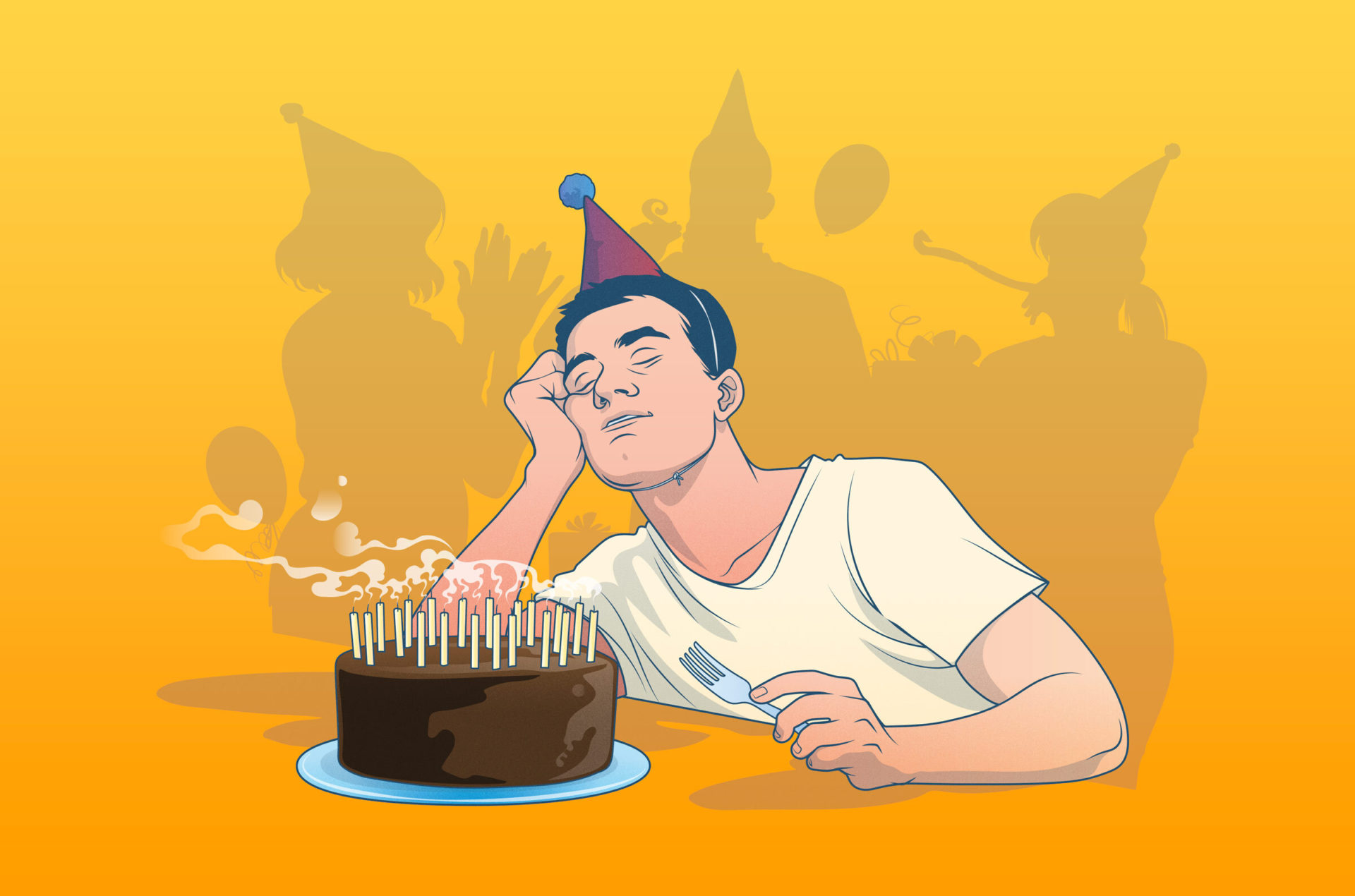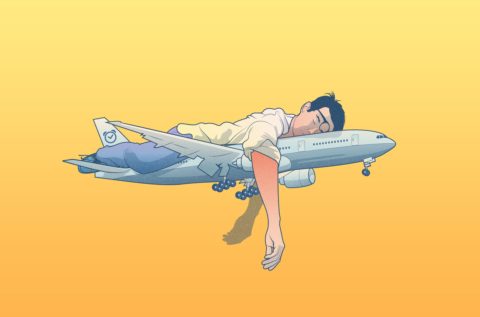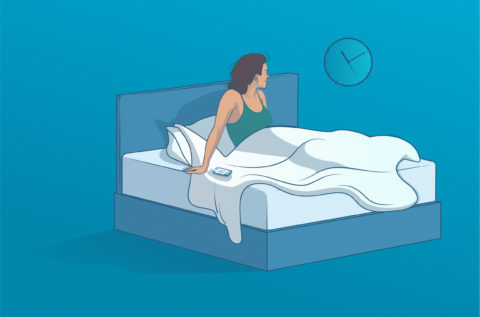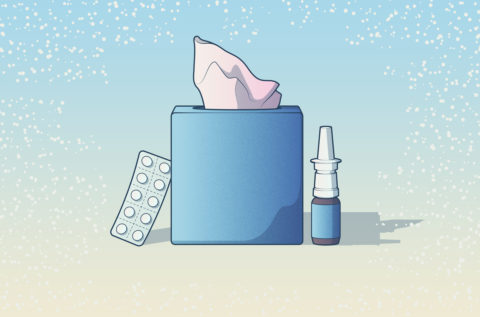Also referred to as Excessive uncontrollable daytime sleepiness (EDS), narcolepsy is a sleep disorder that causes overwhelming daytime sleepiness. It occurs when the brain is not able to regulate sleep-wake cycles – people with this condition may slip into REM sleep at any time of the day, and usually right after falling asleep.
Affecting around 200,000 people in the United States, narcolepsy can lead to accidents, injuries and, in general, poor quality of life. And although plenty of research has been done, it remains misunderstood for many. It’s now time to shine a light on this neurological condition.
1. There are actually 2 types of narcolepsy.
NT1, associated with cataplexy, the sudden loss of muscle tone, and/or low levels of hypocretin-1, a chemical that helps regulate wakefulness; and NT2, which is basically narcolepsy without cataplexy.
2. The causes of narcolepsy are not fully known yet.
Although there’s relevant research about the causes of narcolepsy, the exact reasons and risk factors are not fully known yet. However, research suggests that the causes differ depending on the type of narcolepsy:
- NT1: the low hypocretin (orexin) levels presented in this type of narcolepsy might be triggered by an unknown external factor that causes the immune system to attack the cells that produce this chemical. However, research has also suggested that there can be a link between infections and narcolepsy, and that genetics may play a role in the susceptibility to narcolepsy. Other medical conditions, like brain damage, may also lead to it, although this is rare.
- NT2: there are many theories about the causes of NT2, but a lot remains unknown. Some experts believe that it may be just a precursor to NT1.
3. Narcolepsy is actually a rare condition.
According to the National Organization for Rare Disorders, narcolepsy affects approximately 1 in 2,000 people in the U.S. However, experts believe that the reason for its low incidence is that many individuals go undiagnosed or misdiagnosed.
It occurs equally in men and women, and affects both children and adults at any age, even though onset has been found to peak at age 15 and again around age 35. Although it is a chronic disorder, it doesn’t worsen with age.
4. Excessive daytime sleepiness is not the only symptom of narcolepsy.
Narcolepsy blurs the distinction between sleep and wakefulness. A person affected feels sleepy and fatigued during the day, experiencing excessive daytime sleepiness and sudden attacks of sleep. However, those aren’t the only symptoms (which may not occur simultaneously and vary by person) :
- Changes in the sleep cycle: as previously mentioned, people with this condition may slip into REM sleep at any time of the day, and usually right after falling asleep. If you have narcolepsy and use the Sleep Cycle app, you might have already seen this in your sleep reports.
- Sleep paralysis: according to the NIH (National Institutes of Health), people with narcolepsy tend to experience the feeling of being unable to move during their sleep more than usual.
- Sleep-related hallucinations, and vivid dreams: these may occur while falling asleep or waking up, together with sleep paralysis – which leads to a frightening moment that, fortunately, only lasts a few seconds or minutes.
- Disrupted sleep: contrary to what people might think, sleep fragmentation is common in narcolepsy. Individuals may experience insomnia or trouble staying asleep at night.
- Cataplexy: narcoleptics with NTP1 may experience sudden episodes of muscle weakness while being fully awake – normally triggered by strong emotions. It can also last a few seconds or minutes, and the severity may vary too: from just the loss of muscle tone in the face to full loss of control of many muscle groups (resembling paralysis that naturally occurs during the REM phase).
- Automatic behavior: sometimes, those sudden attacks of sleep can be very brief, lasting just a few seconds – allowing narcoleptics to automatically continue what they were doing right after waking up. However, they aren’t actually fully aware of this, which leads to impaired performance or dangerous situations (for example, if this happens while driving).
5. It’s difficult to diagnose because other conditions can mimic its symptoms.
Undiagnosis or misdiagnosis of narcolepsy occurs because its symptoms are common to other conditions. For example, insomnia, sleep apnea and mental health conditions (like depression) can also cause excessive daytime sleepiness. In children, EDS is manifested with irritability and restlessness, which is sometimes interpreted as misbehavior. Other symptoms like sleep paralysis, hallucinations and vivid dreams can also occur in other sleep disorders or independently.
According to the Narcolepsy Network, 7 years is the average time between the onset of symptoms and the actual diagnosis, and the most common misdiagnosis are depression, insomnia and sleep apnea.
6. No cure for narcolepsy has been found yet. However, there are proven ways to treat it.
Like other conditions, narcolepsy requires a medical diagnosis in order to be confirmed. No cure has been found yet, but there are treatments that can help minimize the symptoms and improve quality of life:
- Healthy sleep habits. Go to bed and wake up around the same time, every day. Keep your room dark and chilled, and avoid heavy meals or alcohol close to bedtime. If you find yourself struggling to fall asleep, get out of bed. Do something else for a while, but avoid the TV and social media.
- Power naps. A good recovery nap lasts 15-20 minutes and is not set too close to bedtime. In general, most people get an energy dip around 2-3 p.m. Try to fit in a short nap around this time.
- Daily 30. Stay active and move for at least 30 minutes a day. It doesn’t matter if you walk, jog, run, or cycle. As long as you make sure you move and get your heart rate up, it can have a positive effect. In fact, research suggests that exercise may ease narcolepsy symptoms.
- Ask for help. If you think you might be suffering from narcolepsy, please contact your physician for diagnosis and treatment. Counseling can help. There are support groups for the disorder all over the world, \providing a great place for those affected to share experiences.
7. This sleep disorder is sometimes confused with hypersomnia.
Both disorders are characterized by the symptom of excessive daytime sleepiness and are considered part of hypersomnolence disorders. However, people with hypersomnia don’t experience changes in their sleep cycle (i.e slipping into the REM stage right after falling asleep) nor sleep attacks. They usually wake up tired and disoriented (sleep inertia), and their power naps are not refreshing. Beyond symptoms, hypersomnia could even be caused by narcolepsy and other sleep disorders.
8. Caffeine may not be narcolepsy’s best friend.
Some people with narcolepsy may find coffee or other caffeinated beverages helpful in staying awake or preventing drowsiness during the day. However, although research suggests small amounts of caffeine may play a beneficial role in this sleep disorder, caffeine is better avoided if stimulant medications are taken to treat narcolepsy. The combination can cause a racing heart, anxiety or jitteriness. In addition, for narcoleptics consuming caffeine as part of their daily routine, it is recommended to avoid drinking it after 4 p.m, as it can make it harder to fall asleep at night and aggravate the symptoms during the day.
9. The condition can affect metabolism and contribute to weight gain
People with narcolepsy tend to weigh about 15-20% more than would be expected on average. Research suggests that the low levels of hypocretin or orexin also lead to low energy and slow metabolism. Some studies have also looked into how narcolepsy affects eating habits – concluding that the sleep disorder may contribute to less eating and a higher risk for eating disorders.
10. Contrary to popular belief, narcoleptics can technically and legally drive.
Although people with narcolepsy are at high risk of drowsy driving, and three to four times more likely to be involved in a car accident, they are allowed to drive. However, conditions apply depending on the country or the U.S state they are living in. For example, in the UK, narcoleptics have a valid driving license for a shorter period – 2 or 3 years – with a medical review at the end of each period. In the U.S, Rhode Island’s drivers with this sleep disorder aren’t required to disclose this medical condition, in Kentucky applicants must be symptom-free for 90 days (in New York and Indiana, a full year is required), while in California or Pennsylvania they need to report any condition that might affect their driving ability.
Although narcolepsy is not a life-threatening illness, it is clear that there are many discomforts and potential dangers associated with this condition. While there is no cure for narcolepsy, certain lifestyle changes, including good sleep habits, may alleviate the discomfort. If you recognize these symptoms in yourself or a loved one, make sure to discuss this with your physician – especially when considering how often narcolepsy goes un- or misdiagnosed.




